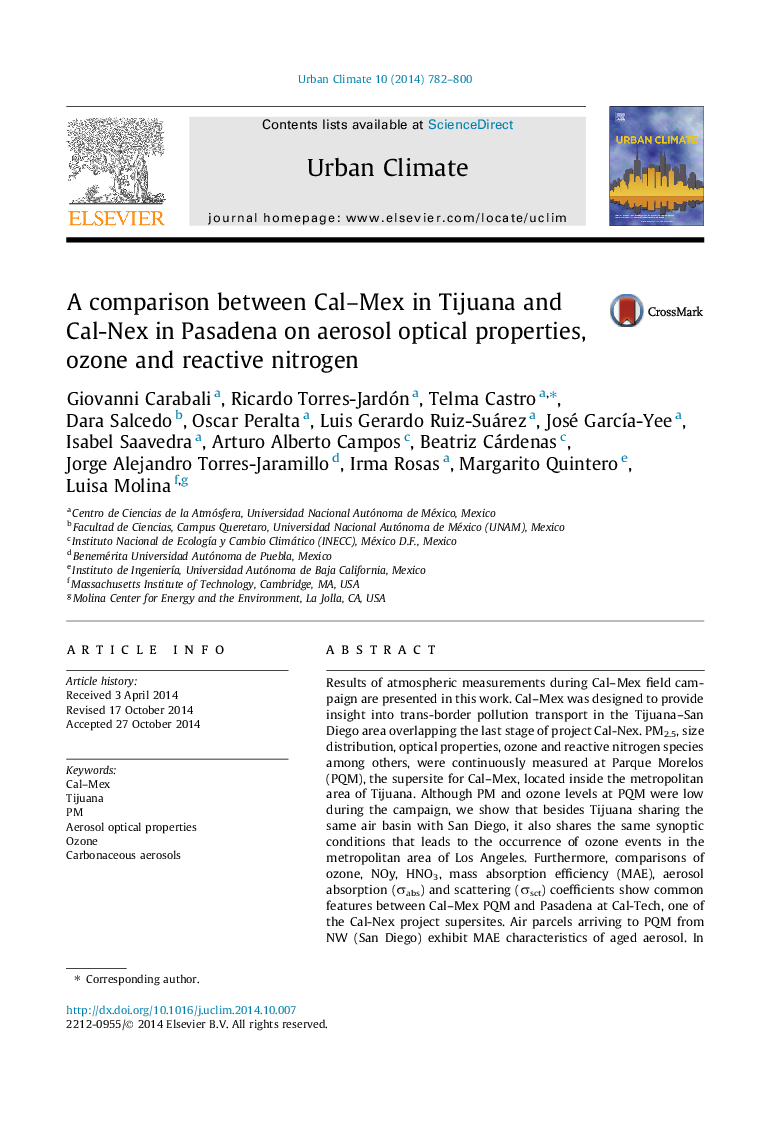| Article ID | Journal | Published Year | Pages | File Type |
|---|---|---|---|---|
| 143701 | Urban Climate | 2014 | 19 Pages |
•Air quality between two urban areas.•Optical properties and submicron particle concentration in Tijuana City.•Ozone production and NOx reactivity.•Aging processes of carbonaceous particles.
Results of atmospheric measurements during Cal–Mex field campaign are presented in this work. Cal–Mex was designed to provide insight into trans-border pollution transport in the Tijuana–San Diego area overlapping the last stage of project Cal-Nex. PM2.5, size distribution, optical properties, ozone and reactive nitrogen species among others, were continuously measured at Parque Morelos (PQM), the supersite for Cal–Mex, located inside the metropolitan area of Tijuana. Although PM and ozone levels at PQM were low during the campaign, we show that besides Tijuana sharing the same air basin with San Diego, it also shares the same synoptic conditions that leads to the occurrence of ozone events in the metropolitan area of Los Angeles. Furthermore, comparisons of ozone, NOy, HNO3, mass absorption efficiency (MAE), aerosol absorption (σabs) and scattering (σsct) coefficients show common features between Cal–Mex PQM and Pasadena at Cal-Tech, one of the Cal-Nex project supersites. Air parcels arriving to PQM from NW (San Diego) exhibit MAE characteristics of aged aerosol. In addition, NOx/NOy ratios are in the transition stage between photochemically young and aged parcels, indicating that, maybe, aged parcels were enriched with more locally recent emissions.
